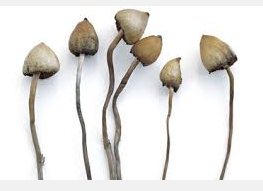-
Tumblr users are turning to this app to resist the urge to self-harm
The main focuses of DBT are mindfulness, emotion regulation, distress tolerance and interpersonal learning. Tumblr users are turning to this app to resist the urge to self-harm By Megan Farokhmanesh Jan 19, 2018, 1:05pm EST Tumblr user icantaffordadiary has been going through a difficult time. The Oregon-based teenager has a history of depression, self-harm, and suicidal thoughts spanning back to their elementary school days. “I’m going through a particularly rough patch right now, and I’ve been self-harming again,” the Tumblr user tells The Verge via DM. But they’ve found comfort in an unusual place: an app called Calm Harm that aims to help users work through their urges. Calm Harm isn’t…
-
Borderline Personality Disorder: Not Just an Adult Condition
Many start engaging in high-risk behaviors, such as substance abuse or self-harm, to help deal with the emptiness. The picture of BPD begins to emerge. Borderline Personality Disorder: Not Just an Adult Condition Batya Swift Yasgur, MA, LSW November 20, 2017 To shed light on this ongoing controversy and its therapeutic implications, Psychiatry Advisor interviewed Carla Sharp, PhD, professor and director of clinical training in the Department of Psychology at the University of Houston, Texas. Dr Sharp is the co-editor of the Handbook of Borderline Personality Disorder in Children and Adolescents2 and the co-founder of the Global Alliance for Early Prevention and Intervention for Borderline Personality Disorder (GAP) Initiative. Psychiatry…
-
Why Aren’t There More Resources for Adult Self-Injurers?
Even getting adults to commit to group therapy can be a challenge. Adults are burdened with more responsibility than adolescents and may have trouble finding the time and effort to make the commitment for their own healing, even when resources are available. Why Aren’t There More Resources for Adult Self-Injurers? By Renée Fabian 03/21/17 Over time, self-injury itself can become a habitual, nearly addictive behavior, and 8.7 percent of self-injurers are also addicts. Erin Hardy, a Wisconsin-based therapist, found herself in a quandary when an uptick of people who self-injured came to her about five years ago. This was a new area to her practice, so Hardy sought consultation with…
-
There is much to learn about self-injury
Of note is that Non-Suicidal Self-Injury (NSSI) people say they actually feel better after hurting themselves. There is much to learn about self-injury Michael Kulla, For the Poughkeepsie Journal 12:56 p.m. EST March 4, 2016 This article is about young people who cut, scratch, burn, carve, interfere with wound healing or bang their heads against a solid object. Tattooing and piercing are usually not considered maladaptive because they are culturally sanctioned forms of expression. The intent of harming oneself per se is not suicidal and is referred to as Non-Suicidal Self-Injury (NSSI). NSSI is especially prevalent among adolescents with approximately 1 in 6 engaging in this behavior at least once.…
-
Self-Injury: Raising the Profile of a Dangerous Behavior
“By applying one type of pain,” he says, “they get rid of a different type of pain,” Self-Injury: Raising the Profile of a Dangerous Behavior A Rutgers researcher appeals to the medical community for better treatment tools and insurance coverage By Rob Forman Self-injury so often occurs in private, an important reason why solid statistics are hard to come by. But researchers estimate between 10 and 40 percent of adolescents, and up to 10 percent of adults, harm themselves physically – usually by cutting or burning their skin. Yet, the condition – known as nonsuicidal self-injury – is not officially recognized by the American Psychiatric Association (APA) as a mental…
-
The situation of former adolescent self-injurers as young adults: a follow-up study
An earlier age of onset of NSSI and a longer duration of NSSI during adolescence was significantly predictive of adult BPD. The situation of former adolescent self-injurers as young adults: a follow-up study Rebecca C. Groschwitz, Paul L. Plener, Michael Kaess, Teresa Schumacher, Ramona Stoehr and Isabel Boege Background Nonsuicidal self-injury (NSSI) in adolescence has been described as comorbid condition in affective or anxiety disorders, as well as borderline personality disorder (BPD) and is a risk factor for later suicide attempts. Prevalence rates of NSSI decline steeply from adolescence to young adulthood. Yet, to the best of our knowledge, the longitudinal development of adolescent psychiatric patients with NSSI into their…











